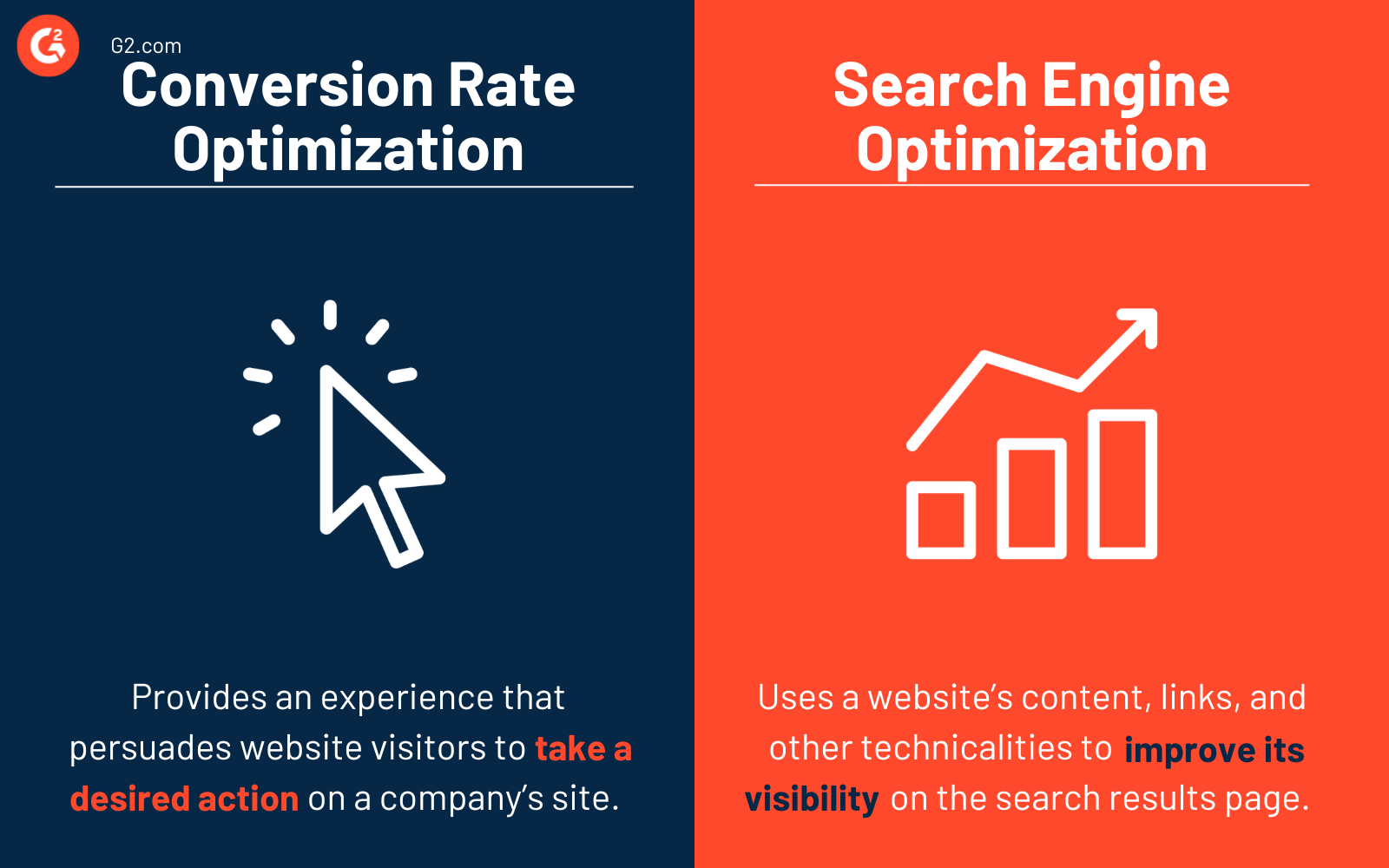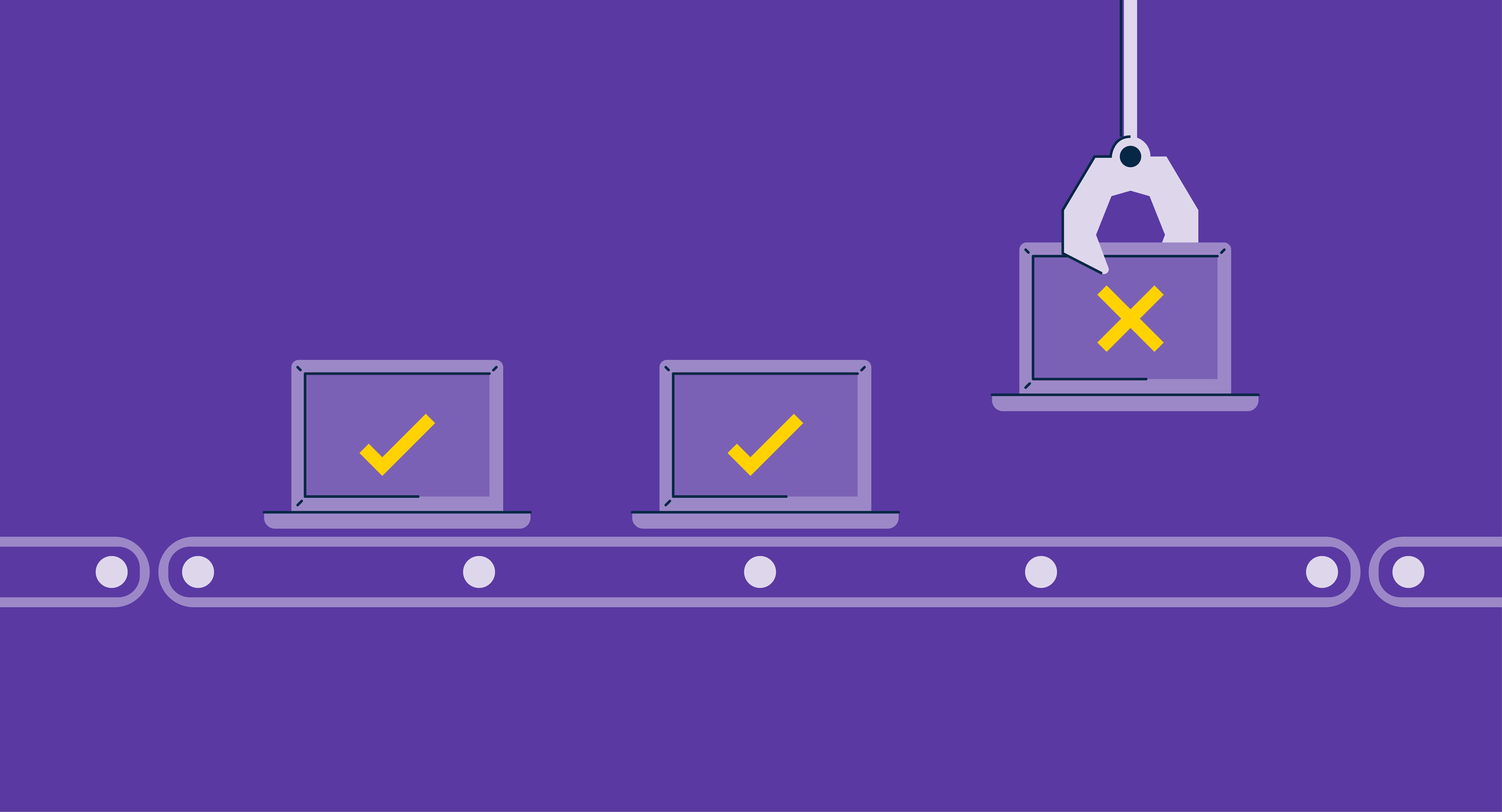What is conversion rate optimization (CRO)?
Conversion rate optimization (CRO) is the process of increasing the number of people performing a desired action on a digital platform. Its objective is to enhance a platform's overall performance by improving features to persuade users to do a certain action, such as filling out a form, buying a product, or registering for a newsletter subscription.
Marketers find A/B testing software useful for testing and optimizing versions of a digital experience to deliver the best results. CRO involves investigating user behavior, running A/B tests, and making data-informed decisions. Understanding user behavior on a website, spotting potential roadblocks to conversions, and implementing solutions to address those issues are its primary operations.
Types of conversions
From a business perspective, someone who makes a purchase is more important than someone who signs up for a newsletter. On the other hand, subscribing to the email suggests a possible future purchase. Conversions are thus split into two groups based on how the business goals are affected.
- Micro conversions don't reflect company objectives directly, but they help marketers move visitors down the sales funnel. Micro conversions frequently increase visitor engagement and encourage communication between them and the brand. That includes subscribing to a newsletter, reading a product page, or adding a product to the wishlist or basket. The relevant metrics are blog comments, page views, and video plays.
- Macro conversions align with the objectives that companies hope to achieve with their website. They comprise actions like purchasing a product, asking for a price or demo, producing leads, or subscribing to a service.
Benefits of CRO
Optimizing conversion rates generates high-quality prospects, boosts sales, and lowers acquisition expenses. Conversion rate optimization provides significant advantages for search engine optimization (SEO), even though it isn't always directly related to generating organic website traffic or ranking on a search engine results page (SERP).
- More precise customer insights. Businesses that engage CRO develop a deeper understanding of the target consumers and the messaging that meets their demands. Finding ideal customers is the focus of conversion rate optimization, so if they aren't people who complement a business’ ideal customer profile (ICP), adding any users won't help
- Better return on investment. A higher conversion rate suggests that a business is handling resources more efficiently. Conversions of current customers through CRO can increase by upselling through the website.
- Equal scalability. Conversion rate optimization lets businesses expand without depleting resources or potential clients, even when the audience's size may not scale as the organization does.
- Enhanced user experience. Visitors who experience a remarkable website value proposition stick around. CRO studies what makes a website successful. User experience can improve by building on the experiences that already work. Users that feel empowered by the website they visit will interact with it more and are likely to spread positive word of mouth.
- Enriched trust. Users have to trust websites before sharing their credit card, email, or other personal information. The primary salesperson is the site itself. CRO keeps it polished and prepared to address all client inquiries, just like an internal sales team would.
Best practices for conversion rate optimization
The crucial factors determining how well a landing page converts its users are based on its copy, calls to action (CTAs), forms, navigation, responsiveness, and page loading speed. It’s easier to optimize a page using these elements, and the practices below will improve CRO.
- Employ a tool for qualitative analytics. Qualitative analytics tools show how visitors move across the website to help spot barriers that lower conversion rates.
- Establish trust with the target audience. People shop at the companies they believe in and trust. The use of social proof by marketers encourages visitors to act at the proper time, even though traditional brand awareness techniques are essential for long-term trust building. Social proof persuades users to convert by demonstrating the reliability of the brand, product, or service. Social proof frequently takes the form of endorsements, media attention, and subscriber numbers.
- Test and reiterate. A/B testing is essential to CRO. Research is the first step toward creating a hypothesis that can be tested. Analyzing the qualitative reports will provide users with many testable ideas. Depending on the prediction, users can decide whether to experiment on pages that are similar in type or on a single page but with separate sections for each segment.
- Speak to customers. Talking to your base is an even more effective technique to increase conversion rates. Engage with them to learn about their needs even though they might not always be practical or viable.
- Simplify. Make the website's user experience (UX) as simple as possible to keep users engaged. Use visual clues to direct people. Most online pages are scanned, so make sure the conversion drivers are prominent.
- Minimize friction. Users are reluctant to share personal information for obvious reasons. It’s better to avoid repeated pop-ups asking users to fill in their contact details. For example, if a page is sales-heavy, the visitor’s resistance will likely increase.
- Don’t blindly replicate the competitors. Replicating what industry titans are doing is a typical strategy because marketers think what works for others will work the same. But it doesn’t work that way. Only facts should be used to inform or make choices.
Conversion rate optimization vs. search engine optimization
It's common to confuse conversion rate optimization with search engine optimization, but the two have key differences.

Conversion rate optimization provides an experience that persuades website visitors to take a desired action on a company’s site. A website's landing page, pricing page, or blog all have the potential to convert visitors into customers. These conversions can all be improved.
Search engine optimization (SEO) is concerned with using a website’s content, links, and other technicalities to improve its visibility on the SERP. It lifts the websites ranking in search engines to get organic traffic. Both SEO and CRO should go hand-in-hand to achieve the best results.
Learn more about SEO and discover how you can use search engines to entice potential customers.

Sagar Joshi
Sagar Joshi is a former content marketing specialist at G2 in India. He is an engineer with a keen interest in data analytics and cybersecurity. He writes about topics related to them. You can find him reading books, learning a new language, or playing pool in his free time.



